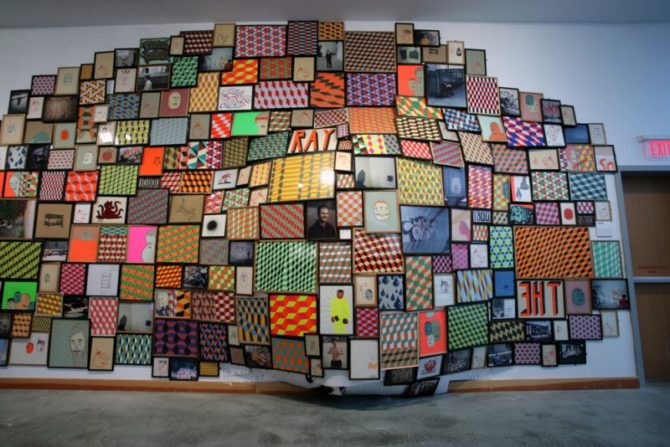Biennale de Lyon

Celebrating its 10th anniversary this year, the Biennale de Lyon is now a must-see event on the international contemporary art calendar. The theme for the 2009 edition is Le Spectacle du Quotidien—the spectacle of everyday life. The imperative for artists today, says 2009 Biennale curator Hou Hanru, is to “reinvent the ordinary in order to turn it into something spectacular and unique”.
The Lyon Biennale was launched in 1991 as a joint effort by the French Ministry of Culture and the city of Lyon, following the success of an annual city-wide “October of the Arts” project organized by Thierry Raspail, director of the city’s Musée d’Art Contemporain since its opening in 1984. Raspail remains the Biennale’s artistic director, in charge of its overall development and the selection of a guest curator for each edition. Among the curators chosen to mastermind past shows have been Harald Szeeman, Jean-Hubert Martin and Hans Ulrich Obrist.
Born in China in 1963, art historian, critic and freelance curator Hou Hanru graduated from Beijing’s Central Academy of Fine Arts. He now divides his time between Paris and San Francisco, where he holds the Chair of Scenographic Studies and Museology at the San Francisco Art Institute. He has worked as a consultant for New York’s Guggenheim Museum and the Walker Art Institute in Minneapolis, and has curated exhibits in San Francisco, Paris, Luxembourg, Istanbul, Guangzhou, Shanghai and at the Venice Biennale.
Hanru’s Spectacle du Quotidien is divided into four main sections: The Magic of Things, or the Reinvention of the Quotidian; In Praise of Being Adrift; Another World Is Possible; and Let Us Live Together. A fifth section, Veduta (as in 17th- and 18th-century Italian views of cities and towns) involves artists who will live temporarily in the city’s restive immigrant suburbs and produce works in cooperation with local residents.
Among the 60 international artists whose works are included in the 2009 Biennale are Algerian photographer and video artist Adel Abdessemed; Indian installation and performance artist Shilpa Gupta; Indonesian installation artist and filmmaker Kuswidananto (aka Jompet); and Colombian photographer and video artist Carlos Motta.
The Chinese form the largest contingent, with 11 artists represented, including Lin Yilin (performance) and Lee Mingwei (installations). The three Americans on the roster are sculptor Jimmie Durham; Sarah Sze, who creates ephemeral sculptures in situ; and painter and graffiti artist Barry McGee, sometimes known as Twist, Twister, Twisty or Twisto.
By and large, it’s a relatively young show. Most of the artists were born in the late 1960s and 1970s. Only a few are over 50, Sarkis and Durham are close to 70. The grand doyenne of the crew, octogenarian film director Agnès Varda will present three tent installations she calls “cabanas”: La Cabane aux Portraits, La Cabane du Cinéma and the newest, the 2007 La Cabane de la Plage—a beach tent in which a film entitled La Mer Méditerranée, avec Deux r et un n, entre Sète et Agde will be projected—showing a beach in winter disrupted by bombed-out houses, displaced people with their baggage, tanks on the move, strikes and tsunamis, before peace finally returns and fishermen bring in their nets.
Along with the Musée d’Art Contemporain—a cornerstone of the Cité Internationale designed by Renzo Piano—the other main venues for the Biennale are two vast former industrial warehouses, the Sucrière and the Entrepôt Bichat, and the Bullukian Foundation arts and sciences center, on Place Bellecour. During the course of the Biennale, river ferries will link all four.
€12 one entry in each of the four locations; €19 permanent pass. Reservations: website Through Jan 3
Originally published in the September 2009 issue of France Today.
Share to: Facebook Twitter LinkedIn Email



